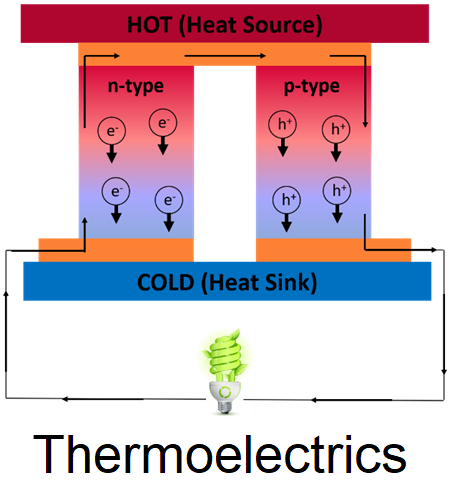More than ten terawatts of waste heat are discharged globally in energy generation and conversion processes. Thermoelectrics try to tap into this huge reservoir by trying to convert waste heat into electricity. Thermoelectric materials need to have a special set of properties including a large electrical conductivity, a small thermal conductivity, and a large thermopower, which describes the voltage generated in the presence of a temperature gradient across the material.
The Kortshagen Group works on nanostructured group IV materials for their interesting thermoelectric properties. By producing bulk materials through processing silicon nanocrystals under high pressure and temperatures, materials can be produced that have 1-2 orders of magnitude lower thermal conductivities than the same material without its intrinsic nanostructure. Current work focuses on enhancing the electrical conductivity and increasing the thermopower.
This work is sponsored by the University of Minnesota.
Related Publications
“High temperature thermoelectric properties of laser sintered thin films of phosphorous-doped silicon-germanium nanoparticles,” Kai Xie, Kelsey Mork, Uwe Kortshagen, and Mool C. Gupta, AIP Adv., 9, 015227 (2019). doi: 10.1063/1.5085016
“Quasi continuous wave laser sintering of Si-Ge nanoparticles for thermoelectrics.” Kai Xie, Kelsey Mork, Jacob T. Held, K. Andre Mkhoyan, Uwe Kortshagen, and Mool C. Gupta, J. Appl. Phys., 123(9), 094301 (2018). doi: 10.1063/1.5018337

